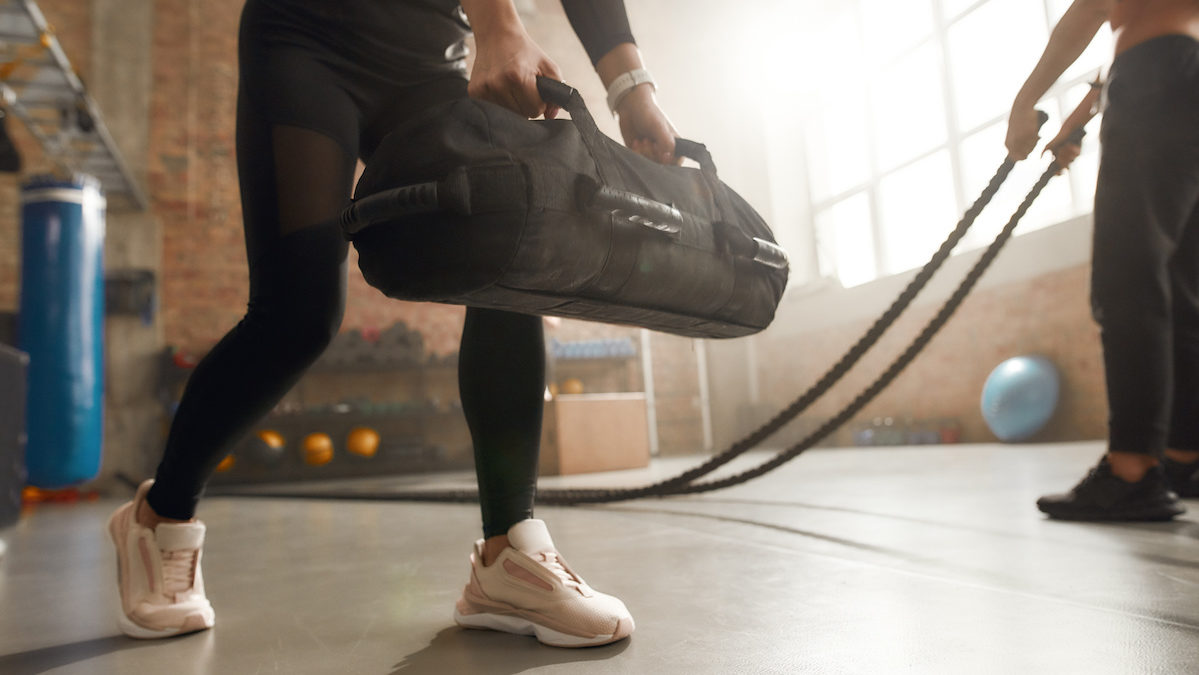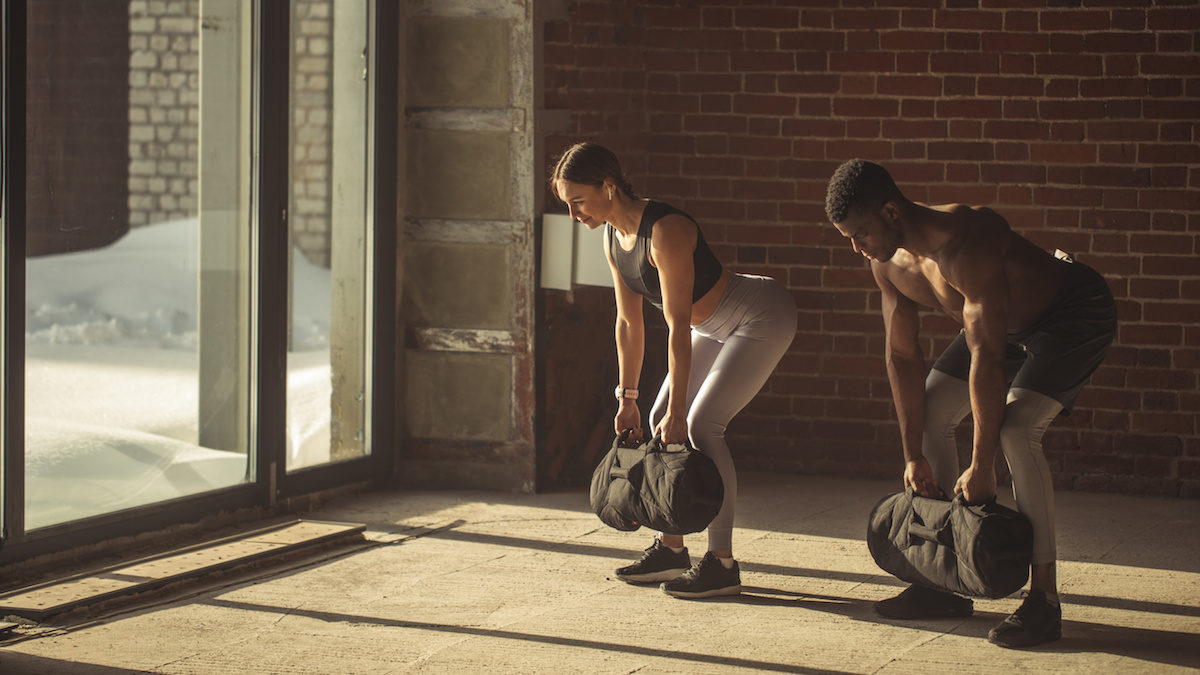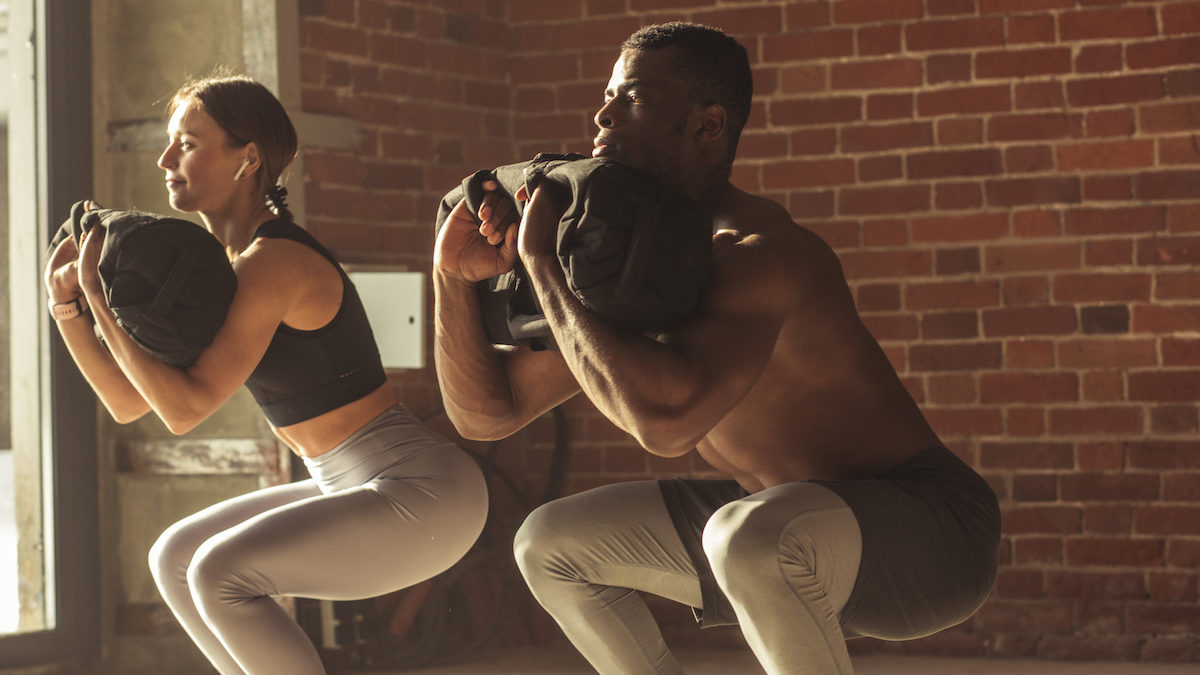Enter Sandman: How the Sandbag Became a Home Workout Favourite

The pandemic has had numerous far-reaching effects, especially when it comes to our workout regimes. After all, it’s been important to keep them up, especially when the scientific research out there is pretty conclusive on the benefit of exercise on our immune system. With a national dumbbell drought, and prices of kettlebells swinging sky-high (along with every other piece of gym equipment), many gym-goers feared the end of their resistance training plans for months. But instead of relenting, people got inventive, with resistance bands and TRX coming to the fore. For those who get their kicks from shifting heavy metal in a cold room on the edge of a business park though (to which I include myself), any alternatives just didn’t feel the same. Enter then, the sandbag workout.
While fitness consultant and personal trainer James Pisano notes that “training at home with anything can be effective it just depends on what you’re trying to achieve,” he understands the limitations that come from a lack of readily-available equipment. “However, a sandbag at home is great for building strength on many levels,” he says, “and very effective for doing just that.”
The sandbag workout has taken Instagram by storm in the past year offering an impressive CrossFit-like workout without the need to steal a monster truck’s wheels. Plus it’s a super-affordable piece of kit when compared to the mortgage you’d have to take out to buy a set of dumbbells right now. Here we breakdown what you need to know about using one then, from finding the sandbag for you to a full-body home workout.
The Benefits Of A Sandbag Workout
Let’s start by covering what the sandbag is good for. “For me, the sandbag – shop built or home constructed – should ideally be used for primal and functional strength applications,” says Pisano. “They’re dense, can be heavy, and are a real dead weight.”
Unlike a barbell, they’re also an unstable weight, which forces you to recruit more muscles in unison to execute the full range of motion. Your stabilising muscles, particularly your core, will be working overtime then to keep you going. Forget sit-ups; deadlifting one of these is how you really build that six-pack foundation.

Can You Just Use A Standard Bag Of Sand?
A scroll through the sandbag workout hashtag will showcase all manner of makeshift bags, from flood-protecting hessian sacks to rucksacks filled with frozen peas. The standard sandbag, or rather the ones you’ll find in a fitness store, come with nylon handles for grip and added functionality, and foam tubing to prevent sand leakage.
“Fitness sandbags are built for purpose so they should be more versatile, safe, useful, and functional,” says Pisano. “However, if you have a good gym-bag, duck-tape, and some frozen produce, you could fashion something quite effective, giving you a chance to increase your resistance levels for pull-ups, bent-over rows, squats, push-ups, and many more.”
The Ultimate Sandbag Workout
Here Pisano breaks down a simple at-home sandbag workout routine utilising four of the principle sandbag exercises.
Deadlifts
How Many Reps? For a heavy load: 3 sets of 8-10 reps. For a light load: 3 sets of 16 reps
Technique: Start with your feet shoulder-width apart, back straight from hip to shoulders at all times (neutral spine), and with a slight bend in the knees. Bending at the hip, drop the chest reaching down to grab the bag handles. Engage the core (squeeze tummy and bum) and slowly stand up straight keeping your chest and nose pointing in the same direction as you move.
Once tall and straight, slowly bring the chest back down lowering the bag towards your feet (bending the hip with a slight bend in the knees still), and just before they touch re-engage and come up again.

Bent Over Rows
How Many Reps? 3 sets of 12-16 reps
Technique: Using the form from above, come down into the deadlift position holding the sandbag wide. When you’re chest is almost facing down, squeeze the tummy and bum to lock in the position.
Now, pull the bag up and in towards your naval. Make sure you aim to get your bent elbows right up behind you and squeeze your shoulders blades together and your shoulders tight down onto your back, engaging as much of the back as possible. Slowly release the arms straight and down then repeat the movement.
Walking Lunges
How Many Reps? 3 sets of 24 alternating reps
Technique: Holding the bag either across your shoulders or front-loaded up by your chest, step forward with your left foot and enough distance to be able to bend both legs equally.
As the left foot hits the ground, bend the left knee, and descend towards the floor. Bringing the hip forward and down with a slight forward tilt on your torso. You need to keep your back engaged and spine neutral (straight) looking forward as you lunge.
Drive-up from the left heel and stand up stepping forward. Now, go straight through and step with the right foot repeating the movement.

Squat Press
How Many Reps? Heavy load: 3 sets of 8-10 reps Light load: 3 sets of 16 reps
Technique: Front-load that sandbag bringing it up to your chest. Now, drop your bum and open your hip. This will help you sit back into a strong squat position. Squeeze your tummy and push your heels into the ground, squeezing your bum to bring you up from the squat.
When you reach around 70-80 percent elevation, start to squeeze your core even more and as you fully stand, drive that sandbag up above your head, fully extending your arms up and open above your head.
As you retract the bag, bring it back down towards the chest. Make sure it’s almost touching before dropping into the squat again so you don’t catch it in descent adding unnecessary stress to your knees.


















